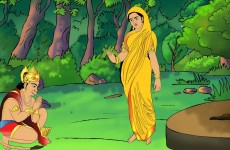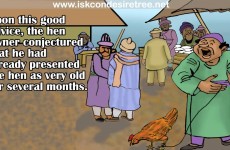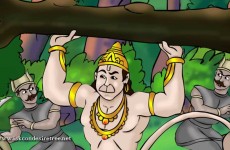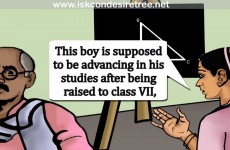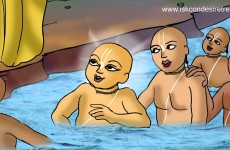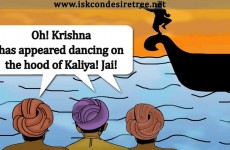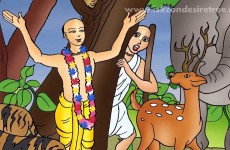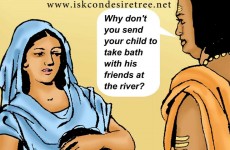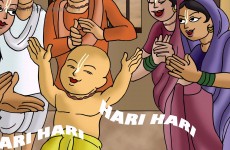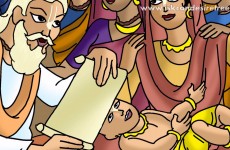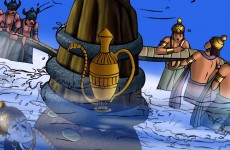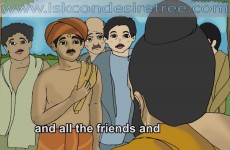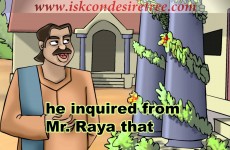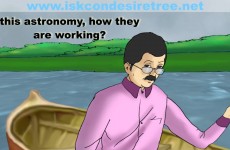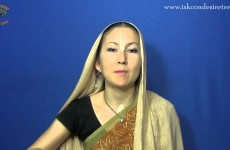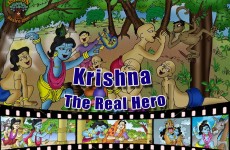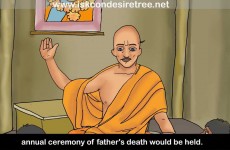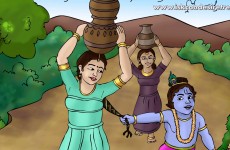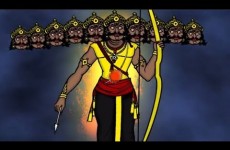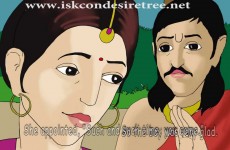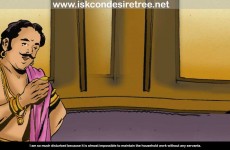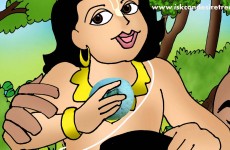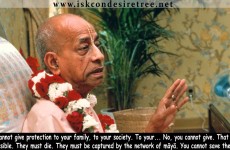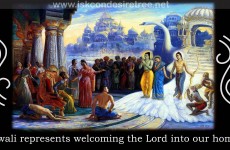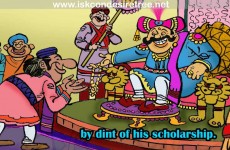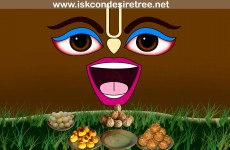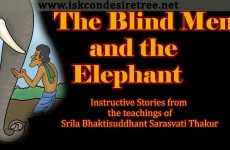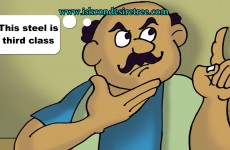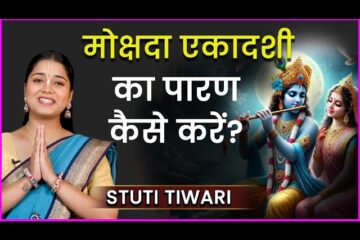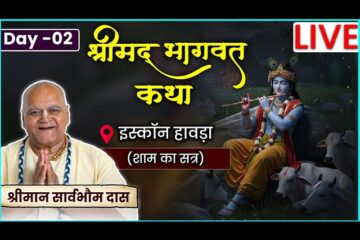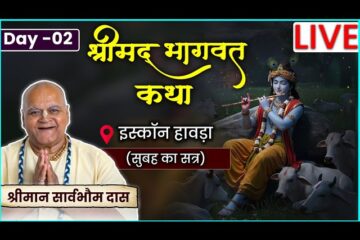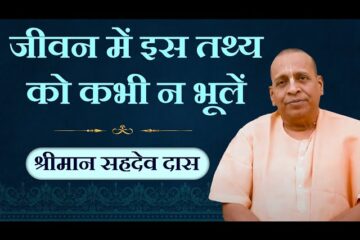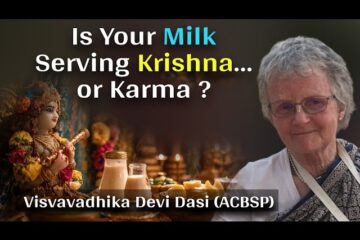Comic – Vedavyasa — The Literary Incarnation Of God
Storyboard Artist: Sanjay Ghosh
Script: Madanmanjari devi dasi (Meenakshi Pande)
Graphics: Ranjana Sawant & Umesh Modak
Audio Narration: Madanmanjari devi dasi (Meenakshi Pande)
Audio Recording & Editing: Madhava Das
Video Editing & Animation: Madhava Das
Recording Studio: Gopal’s Studio, Mumbai.
Produced by: www.iskcondesiretree.net
Sri Veda Vyasa is a celebrated name among the great sages of Bharatha Khanda. Majority of people in India knows Veda Vyasa as only an author and a character of epic Mahabharatha, and do not know his great contribution to the spiritual world. For the purpose of discussion this article is based on the Vyasa who was present during 28th Dwapara Yuga, who was a character in the great epic Mahabharatha and who was a contemporary of Lord Sri Krishna. One may get a doubt as to how many Vyasas were there.
Who is this Vyasa?
Literally Vyasa means one who explains, elaborates, describes, compiles, arranges. Generally we find the word Vyasa Kartha in the literary world meaning one who has authored/scripted an article on a topic. In terms of Vedic/Divine literature Vyasa has become a legend. Vyasa whom we all know is the founder of Vedanta Philosophy who has classified the Vedas, compiler of the great epic Mahabharatha, Brahma Sutras, and author of Puranas. He is said to be the first historian (Divine) of the human race. He is a genius by birth, performed rigorous penance and austerities to realize the supreme truth. He is said to be an incarnation of Lord Maha Vishnu. Though his name does not find a place in Dasaavatharas but is one of the many avatharas which Lord Vishnu has undertaken. Vyasa is also called by other names viz. Krishna Dvaipayana, Veda Vyasa, and Badarayana.
Veda Vyasa & Vishnu Sahasra Nama Sthothram?
Poorva Peetika of Sri Vishnu Sahasra Nama Sthothram which forms a part of the Epic Mahabharatha describes Vyasa in a befitting manner. Veda Vyasa is the presiding Rishi for Vishnu Sahasranama Sthothram. Following slokas from Sri Vishnu Sahasra Nama Sthothram tells us about Sri Veda Vyasa in a nutshell.
Vyaasam Vasishhta Naptaaram Shakteh Pautramakalmasham
Paraasharaatmajam Vande Shukataatam Taponidhim
Vyasaaya Vishnu Roopaaya Vyaasa Roopaaya Vishnave
Namo Vai Brahma Nidhaye Vaasishtaaya Namo Namah
KrishnaDvaipayanam Vyasam sarvalokahite ratam
VedaabjaBhaskaram Vande Samadhinilayam Munim
Salutations to that Vyasa who is free from all defects and is a treasure of austerities, is the great-grandson of sage Vasishta, grand-son of Shakti, son of Parasara and father of Sukha. My repeated salutations are to Vyasa who is a form of Lord Vishnu and to Vishnu who is a form of Vyasa, who is a descendent of sage Vasishta, who is a treasure of Brahman. Let us worship the sage (Muni) Vyasa who is Krishna Dvaipayana, who is devoted to the welfare of the world, who is like a Sun to the Vedas.
Veda Vyasa and Bhagavad Gita?
Bhagavathgeetha the divine preaching of Lord Sri Krishna forms a part of Epic Mahabharatha composed by sage Veda Vyasa. In chapter ten of Bhagavath Geeta (Vibhuthi yoga), Lord Sri Krishna says “Of all sages, I am Vyasa” (Muneenamapyaham Vyasah).
NamosthuThe Vyasa Vishala Bhuddhe
Pullaravindhayatha Pathra Nethra
Ena Thvayaa BharathaThailaPoornah
Prajvalitho Gnanamaya Pradeepah
This is a part of the Dhyana sloka for Bagavad Gita. This verse salutes Sri Veda Vyasa who has very wide knowledge (Vishala Buddhi) & has eyes, like the petals of a fully blossomed Lotus. Veda Vyasa is like a brightly glowing lamp (with Divine Wisdom) in the oil of Maha Bharatha which is a Panchama Veda.
Veda Vyasa and Lord Ganesha?
There is an interesting story associated with the writing of Mahabharata. Vyasa needed to concentrate on composing, and wanted someone to write it down as he recited the verses. As per the directions of Lord Brahma, Lord Ganesha the elephant headed deity, agreed to do so but on a condition that the recitation speed should be such that there is no break in the writing. Vyasa agreed but put forward a counter condition that Ganesha must understand the meaning of the verses before he wrote it down. Thus whenever Vyasa needed time to compose the next verses he would first recite some complex verses so that Ganesha would take time to figure out what they meant. This gave Vyasa the time he needed. At one point of time Ganesha’s quill broke while he was writing. He then broke one of his tusks and continued writing. This is the reason that Ganesha is always depicted with one tusk and is called as Ekadantha.











